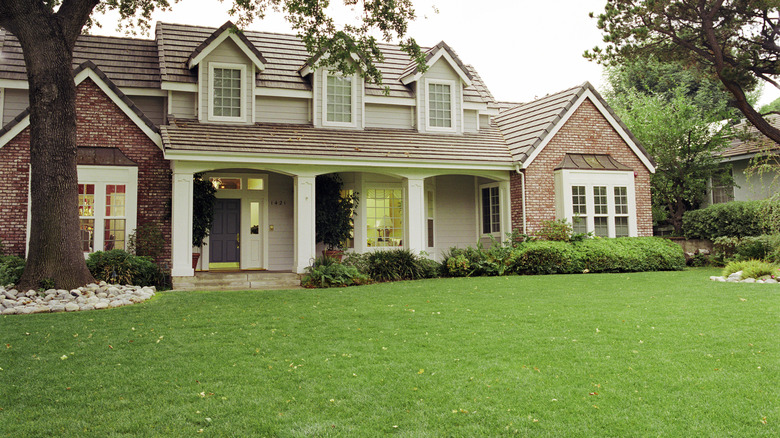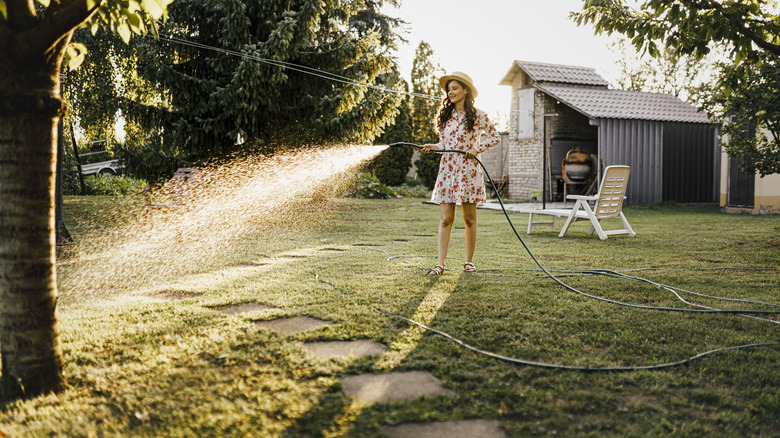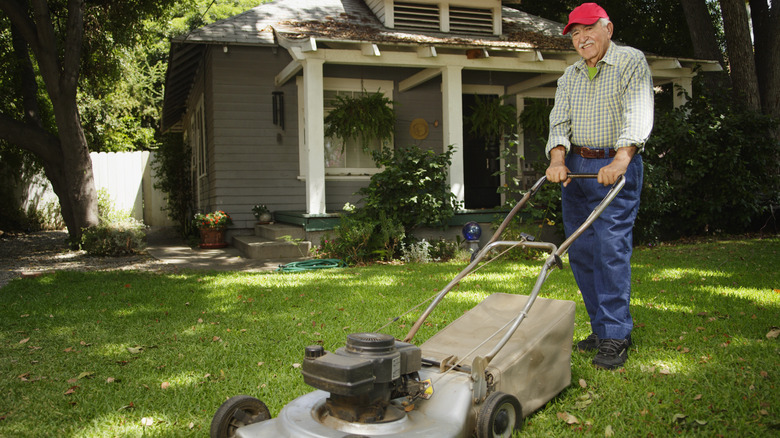How To Treat Your Lawn In August
August is a critical time for preventing and treating lawn damage. During this month, it's important to ensure that your lawn receives an adequate amount of water to counterbalance the sweltering heat. Equally important are the techniques of aerating and overseeding — carefully timing overseeding in August can significantly contribute to maintaining a luxuriant, healthy carpet of soil that will impress your neighbors.
Moreover, the last weeks of summer are an ideal time to take preemptive measures against common lawn pests and diseases — the combination of heat, humidity, and possible pest invasions can wreak havoc. Proactive management can deter these unwanted guests, saving your lawn from potential damage and you from a heap of frustration. You'll have to regularly inspect your lawn for signs of disease or pest activity, such as brown patches or areas of thinning grass. If you notice any signs of trouble, it's best to act fast.
At first glance, these summer lawn care measures might seem overwhelming, almost daunting. The combination of heat, pests, and the requirement for constant care could make anyone think twice. However, there's no need for concern. The goal is to keep your lawn not just surviving but thriving, staying verdant, lush, and healthy through the pinnacle of summer.
Lawn watering and aeration
First and foremost, the key to a healthy lawn in August is adequate watering. Given the heat and the potential lack of rainfall, your grass is going to be thirstier than usual. However, this doesn't mean you should water your lawn daily. Overwatering can lead to drowning. It's about striking the right balance. Aim to water your lawn three times a week. Applying up to 1 inch of water per week, including rainfall, is a decent rule of thumb regarding quantity. To determine how much rain has fallen, use a rain gauge and alter your watering schedule accordingly. Remember that you want the soil to be consistently moist, not overly wet. Finally, water your lawn early in the day to avoid it getting too hot. Less water evaporation occurs as a result, allowing it to penetrate the soil where it is most required.
Also, try to aerate your lawn in August — this is crucial to its health and appearance. When you aerate your lawn, you perforate small holes in the soil to let in adequate water, air, and nutrients. This breaks up any compaction, and is particularly important in August when heat and dry conditions can compact the soil, making it harder for roots to breathe and absorb nutrients.
Mowing and fertilizing
Mowing is another essential aspect of lawn care in August. The way you mow your lawn can have a significant impact on its health and appearance. The key here is to mow high. By setting your mower blade to the highest setting, you allow the grass to grow taller, which shades the soil and reduces water evaporation. Additionally, avoid mowing your lawn during the hottest parts of the day. Instead, mow in the late evening, when temperatures are cooler. This helps prevent the grass from going into shock due to the heat.
Fertilizing is another practice to consider; however, doing it in August is a subject of debate among lawn care professionals. Generally, it is not recommended to fertilize during a drought or high-heat period, as it can burn your lawn. If you regularly fertilize your lawn throughout the year, it should have enough stored nutrients to help it through the summer.
Lastly, if your lawn has bare or thin spots, consider overseeding, which is the process of planting grass seeds directly into existing turf, in turn helping maintain a lush, thick lawn. This strategy fills in any bare spots, prevents erosion, and increases your lawn's resistance to diseases and pests. Moreover, it also enhances its color and texture. By introducing new, resilient grass varieties, overseeding can help your lawn better withstand the heat and drought conditions that come with the late summer. Remember, a thicker lawn not only looks better, but is also healthier and more robust.


